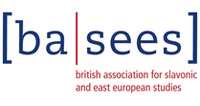Authors
Beatrice Leeming1; 1 University of Cambridge, UKDiscussion
More than 900,000 people visited Dachau Concentration Camp Memorial Site in 2019. An anecdotal foray into the visitors’ books of the memorial in the preceding three decades reveals a desire amongst tourists to ‘see for [themselves]’ the historic place, where ‘it seemed more real than before’ and where ‘the lesson is clear and important’. In literally hundreds of entries, ‘this place is important’ because it ‘makes it real’. The rationale for going to sites of violence and trauma, whether as a tourist, pilgrim, or survivor-descendant (or a combination of all three), is of relatively recent interest in memory studies. In the 1990s, the phenomenon of international travel to sites of violence and tragedy was dismissed as a combination of “dark tourism”, “thanotourism”, and “dissonance in heritage.” The visit was symptomatic of the postmodern absence of traumatic intimacy, the hollowing out of the ‘real’ in an age of oversaturation and simulation, and representative of the morbid curiosity that (only) the scholarly intellectual was capable of keeping at bay. Meanwhile the visitor was the object, rather than subject, of enquiry. However, since the new millennium, ethnographic, oral, and anthropological surveys have begun to take an interest in both the motivation for going, and the moment of encounter between the visitor and visited. A direct encounter with history, including via the specific sensory features that accompany space, has begun to acquire precedence as a valuable means to further ‘understanding’, especially for pedagogic purposes.5 This paper will historicise the specific encounter with Auschwitz on the part of educational-visits from West Germany. The visits of young people were part of the politicised memory work encouraged by the West German state. Increasing in scale and scope from their inception in the late 1950s, the international press reported on German youth literally removing the weeds from Holocaust sites, demonstrating a contemporary “will to remember the past and to draw lessons from it”. From the mid-1950s, these sites – and Auschwitz especially – became facilitators for a new kind of memory work, one premised on affective spatial encounters.
